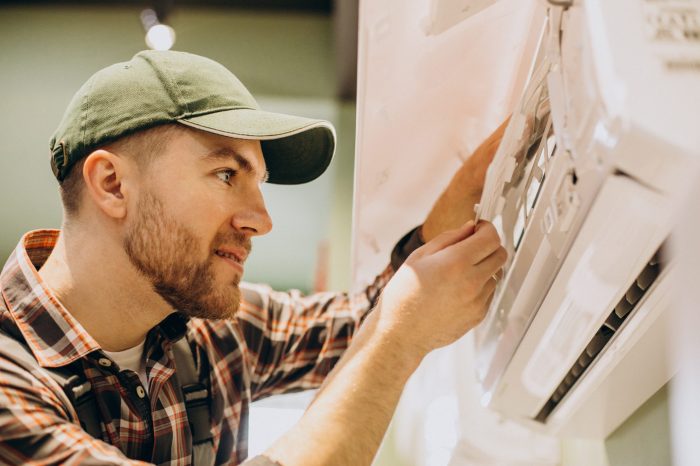
When you expect your air conditioner to provide a refreshing blast of cool air, the last thing you want is to feel a warm breeze instead. AC warm air issues are frustrating, especially in the middle of summer. However, understanding the possible causes and solutions can save you time, money, and unnecessary discomfort. This guide offers a complete, in-depth look at why your AC might be blowing warm air, how to diagnose the problem, and effective ways to fix it.
1. Understanding How Your AC Should Work
Before troubleshooting, it’s helpful to know the basics of how your AC operates. A typical split or central air conditioning system has four main components: the compressor, condenser coil, evaporator coil, and refrigerant.
- The compressor circulates refrigerant between the indoor and outdoor units.
- The evaporator coil absorbs heat from your home’s air.
- The condenser coil releases that heat outside.
When any part of this process fails, warm air may come out instead of cool air.
2. Common Causes of AC Warm Air Problems
Several issues can cause your air conditioner to blow warm air. Let’s look at the most frequent culprits:
a. Incorrect Thermostat Settings
Sometimes, the fix is surprisingly simple. If your thermostat is set to “Heat” instead of “Cool”, or if the fan is set to “On” rather than “Auto”, warm air will circulate.
Quick Fix: Ensure the thermostat is on “Cool” mode and set a few degrees lower than the current room temperature.
b. Dirty Air Filters
A clogged air filter restricts airflow, which can cause your evaporator coil to freeze. Once the coil freezes, the AC struggles to cool, and you may feel AC warm air instead.
Quick Fix: Check and replace the air filter every 1–3 months, depending on usage.
c. Refrigerant Leaks
Refrigerant is the lifeblood of your AC system. Low refrigerant levels reduce cooling efficiency, and eventually, your AC may only push warm air.
Quick Fix: Refrigerant handling requires a licensed technician. If you suspect a leak, call a professional immediately.
d. Electrical Issues
Faulty wiring, a tripped circuit breaker, or a blown fuse can prevent the outdoor unit from running, leaving only the indoor fan blowing warm air.
Quick Fix: Reset tripped breakers, but if the problem recurs, contact a certified electrician or HVAC technician.
e. Dirty Condenser Coils
The outdoor unit’s condenser coil releases heat. If it’s coated with dirt or debris, it can’t do its job properly, causing your AC to overheat and blow warm air.
Quick Fix: Gently clean the outdoor coil with a garden hose (never use high-pressure water) and remove surrounding debris.
f. Frozen Evaporator Coils
When airflow is restricted or refrigerant levels are too low, the evaporator coil can freeze, making it impossible for the AC to cool air properly.
Quick Fix: Turn off the system and let the ice melt before restarting. Then, address the root cause.
3. How to Diagnose AC Warm Air Issues
Step 1: Check Thermostat Settings
This is the fastest check and often solves the problem immediately.
Step 2: Inspect Air Filters
Pull out the air filter and check if it’s dirty or clogged.
Step 3: Look at the Outdoor Unit
Is the fan spinning? Is there visible debris blocking airflow?
Step 4: Listen for Unusual Noises
Hissing may indicate refrigerant leaks, while buzzing can signal electrical issues.
Step 5: Test Airflow
If air is weak, it could mean a blockage or fan issue.
4. Solutions to Common AC Warm Air Problems
| Problem | DIY Solution | Professional Needed? |
|---|---|---|
| Thermostat misconfiguration | Reset to “Cool” mode and “Auto” fan | No |
| Dirty air filter | Replace filter | No |
| Refrigerant leak | None (requires leak repair & recharge) | Yes |
| Dirty condenser coil | Gently clean coil | No (unless internal) |
| Frozen evaporator coil | Thaw coil, fix airflow/refrigerant issues | Yes |
| Electrical fault | Reset breakers, replace blown fuses | Yes |
5. Preventing Future AC Warm Air Problems
Prevention is always better than costly emergency repairs. Here’s what you can do:
- Schedule annual HVAC maintenance to inspect refrigerant levels, clean coils, and check for electrical issues.
- Replace air filters regularly to keep airflow optimal.
- Keep outdoor units clear from plants, debris, and dirt buildup.
- Monitor thermostat performance and replace batteries annually.
- Check ductwork for leaks to ensure cooled air reaches every room.
6. When to Call a Professional
If basic troubleshooting doesn’t resolve the AC warm air problem, or you notice persistent issues like strange noises, high humidity indoors, or constant short cycling, it’s best to call an HVAC expert.
A qualified technician can:
- Detect and repair refrigerant leaks.
- Test electrical components safely.
- Perform deep cleaning without damaging coils.
- Calibrate or replace faulty thermostats.
7. Final Thoughts
Dealing with AC warm air is inconvenient, but in most cases, the cause can be identified and resolved quickly. From simple fixes like changing a thermostat setting to more complex issues like refrigerant leaks, understanding the problem helps you take the right action. Regular maintenance and timely repairs will keep your air conditioner performing at its best, ensuring you stay cool when it matters most.

